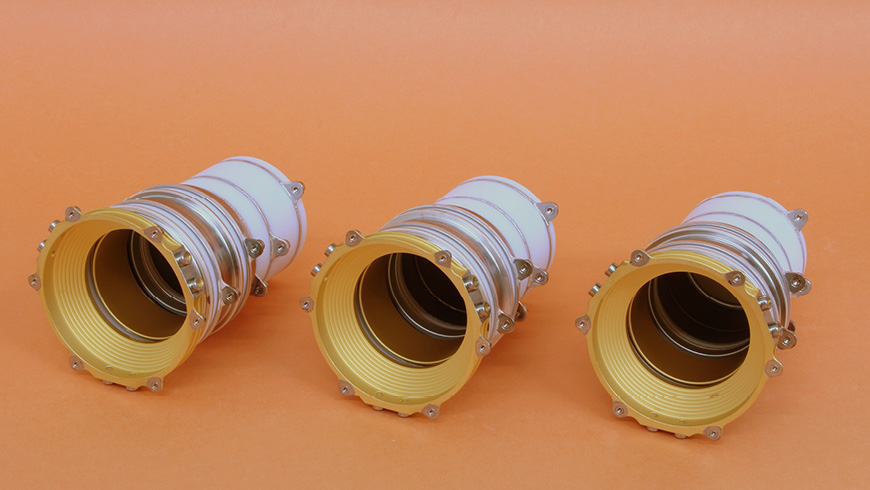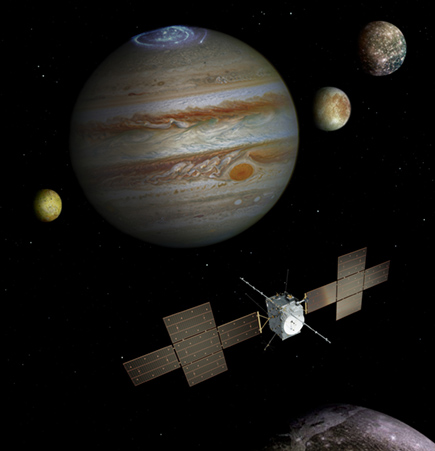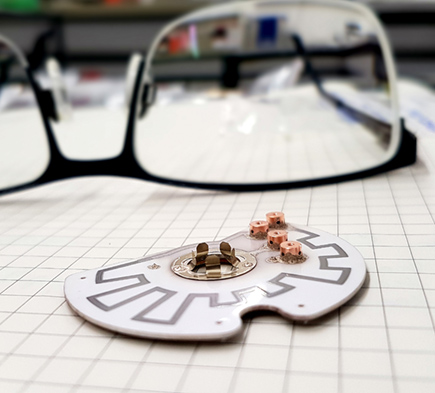Empa-made components on board the space probe
From Dübendorf to Jupiter

Vibrations, vacuum, radiation and extreme temperature fluctuations: Scientific instruments intended for spacecraft must be able to withstand harsh conditions for years and still function with the utmost precision and reliability. No wonder that every single component has to meet the highest requirements.
Hans Rudolf Elsener from Empa's Joining Technologies and Corrosion laboratory is well aware of this responsibility. For around 25 years, he and his colleagues have been supplying various components for space exploration in collaboration with researchers at the University of Bern. Several missions of the European Space Agency (ESA) have already had his components on board, such as the comet probe Rosetta, the Mercury orbiter BepiColombo and the space telescope CHEOPS. The next destination is Jupiter.
ESA's Jupiter Icy Moons Explorer (JUICE) mission will be launched on 13 April. Its mission is to study the largest planet in our solar system, Jupiter, and its icy moons Ganymede, Callisto and Europa. Among the eleven scientific instruments on board the spacecraft is a mass spectrometer developed at the University of Bern. The Neutral Ion Mass Spectrometer (NIM) measures the chemical composition of the outermost layer of the atmosphere of Jupiter and its moons. At the heart of the instrument, which only measures 36 centimeters in length, is a piece of Empa.
For the researchers at the University of Bern, Elsener's team at Empa manufactured some components for the high-precision scientific instrument, including a so-called reflectron. "You can think of this as an electric mirror," explains the Empa researcher. "Incoming ions are slowed down by applying an electric field and then accelerated in the opposite direction. This allows for much more precise measurements."
At first glance, the reflectron is not particularly impressive. It consists of stacked ceramic cylinders with narrow titanium rings embedded between them. But the devil is in the details: The insides of the ceramic cylinders are spirally coated with a high-resistance glass-containing metal oxide paste. This robust coating enables the application of a strong electric field that requires only a little of the scarce electricity on board the spacecraft.
Precision and patience
The individual components of the reflectron were soldered together at Empa. The technology that the Empa team had used has nothing in common with the well-known soldering iron one might imagine, however. The soldering takes place in a special furnace under a high vacuum. If the furnace contained even a trace of oxygen, the titanium would oxidize to a white powder at the high temperatures inside. Before the components go into the oven, the team coats them to optimize the soldering process.
Every step of the process is carefully documented, because each component must be traceable throughout production – from the very first coating all the way to the launch of the Ariane V rocket from French Guyana, which is scheduled for 13 April.
Space exploration requires patience: Elsener's team had completed the components for JUICE back in 2019. And it will take even longer before the first ions from Jupiter's atmosphere will be racing through the reflectron: JUICE is not expected to reach Jupiter's orbit until summer 2031...
Dr. Hans Rudolf Elsener
Joining Technologies and Corrosion
Phone +41 58 765 42 27
Tobias Burgdorf
Joining Technologies and Corrosion
Phone +41 58 765 65 97








